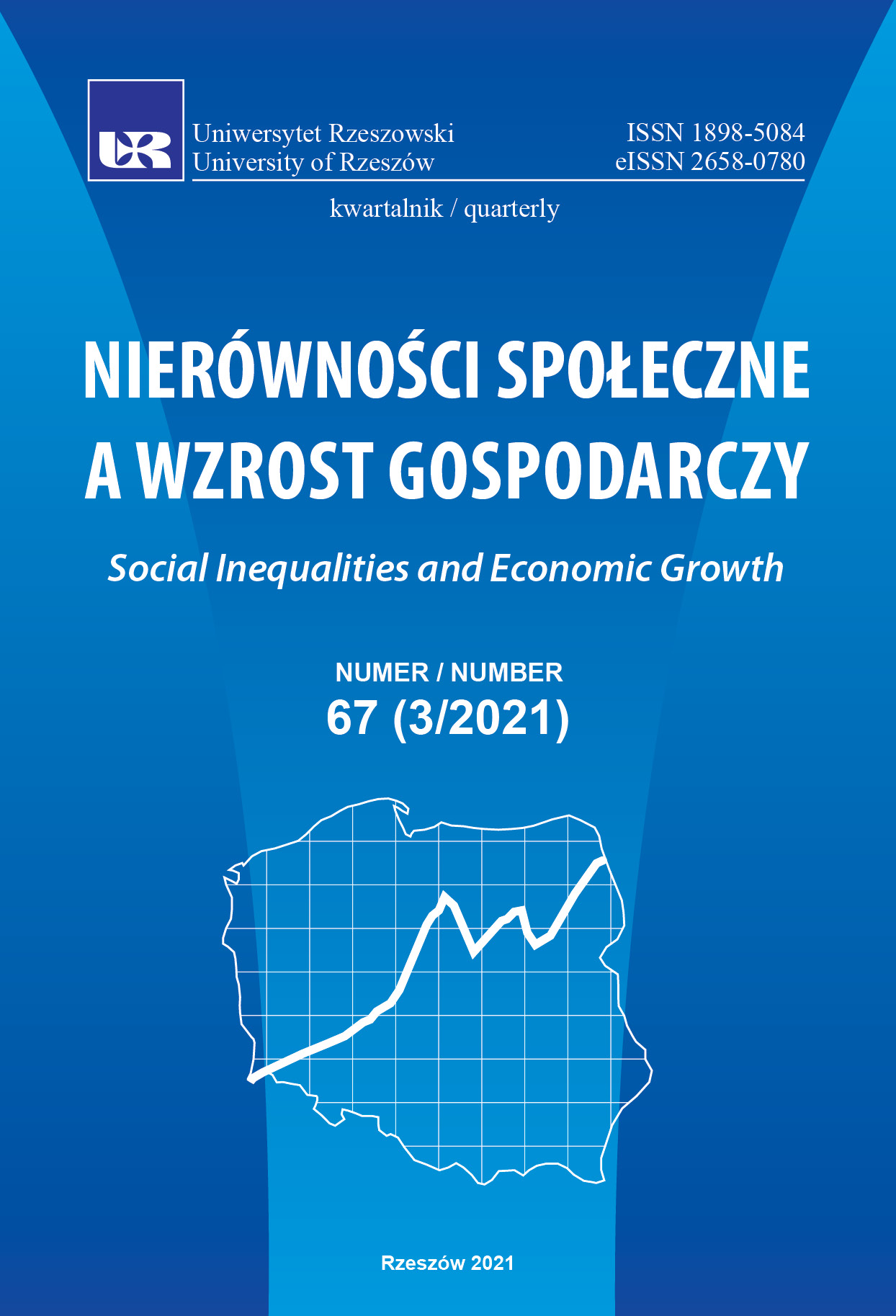Ordering of innovation projects by multi-criteria decision-making methods – a comparison
DOI:
https://doi.org/10.15584/nsawg.2021.3.7Keywords:
multi-criteria analysis, AHP, TOPSIS, WLC, correlationAbstract
In the case of the integration process, economic and social differences between economic units represent a barrier. There are reasonable and active efforts of many administrative bodies to transfer the existing inequalities to equalities. In practical life, it is often necessary to order different objects and take a decision based on it. Decision-making can be intuitive or, conversely, based on various quantitative methods. The paper discusses some quantitative methods of multi-criteria decision-making (MCDM), namely Analytical Hierarchy Process (AHP), Technique for Order of Preference by Similarity to Ideal Solution (TOPSIS), and Weighted Linear Combination (WLC); and their use for innovation projects. Autonomous orders of objects (projects) are performed on the same basic data set by the above-mentioned methods, and they are compared with each other. The Spearman’s rank correlation coefficient was used for mutual comparison. The test results showed that the investigated methods do not provide results with a close dependence, which means that the order of objects (projects) created depends on the method used.
Downloads
References
Al Garni, H. Z, Awasthi, A. (2018). Solar PV Power Plants Site Selection: A Review. In: I. Yahyaoui (Ed.), Advances in Renewable Energies and Power Technologies. Volume 1: Solar and Wind Energies (pp. 57–75). Elsevier. DOI: 10.1016/B978-0-12-812959-3.00002-2.
Anderson, D. R., Sweeney, D. J., Williams T. A., Camm, J. D., Cochran, J. J. (2016). Quantitative Methods for Business, 13th Edition, CENGAGE Learning.
Beroggi, G. (1999). Decision Modeling in Policy Management: An Introduction to the Analytic Concepts. New York: Springer Science + Business Media. DOI: 10.1007/978-1-4615-5599-5.
Blachowski, J. (2015). Methodology for assessment of the accessibility of a brown coal deposit with Analytical Hierarchy Process and Weighted Linear Combination. Environmental Earth Sciences, 74, 4119–4131. DOI: 10.1007/s12665-015-4461-0.
Cubukcu, A. (2018). A New Multi-Criteria Decision-Making Approach in the Evaluation of Innovative Ideas. 12th International NCM Conference: Challenges in Industrial Engineering & Operation Management. DOI: 10.2139/ssrn.3299917.
El Jazouli, A., Barakat, A., Khellouk, R. (2019). GIS-multicriteria evaluation using AHP for landslide susceptibility mapping in Oum Er Rbia high basin (Morocco). Geoenviron Disasters, 6(3), 1–12. DOI: 10.1186/s40677-019-0119-7.
European Commision. (2014). Regional policy. Retrieved from: https:// ec.europa.eu/regional_policy/sk/policy/how/principles/ (2021.02.01).
Hwang, C. L., Yoon, K. (1981). Multiple Attribute Decision Making. Berlin: Springer--Verlag.
Kumru, M., Kumru, P. Y. (2014). Analytic hierarchy process application in selecting the mode of transport for a logistics company. Journal of Advanced Transportation, 48(8), 974–999. DOI: 10.1002/atr.1240.
Macharis, C., Bernardini, A. (2015). Reviewing the use of Multi-Criteria Decision Analysis for the evaluation of transport projects: Time for a multi-actor approach. Transport Policy, 37(10), 177–186. DOI: 10.1016/j.tranpol.2014.11.002.
Neves, A. J. S., Camanho, R. (2015). The Use of AHP for IT Project Priorization – A Case Study for Oil & Gas Company. Procedia Computer Science, 55, 1097–1105. DOI: 10.1016/j.procs.2015.07.076.
Saaty, T. L. (1980). The Analytic Hierarchy Process. New York: McGraw-Hill.
Santana, E. A. (1996). Múltiplos critérios: uma alternativa, apesar das fragilidades das soluçőes. IInd International Congress of Industrial Engineering (Proceedings CD ROM). Piracicaba (Brazil): Universidade Metodista de Piracicaba.
Zak, J. (2005). Multiple Criteria Decision Aiding in Road Transportation. Poznan: Poznan University of Technology Publishing House.
Zanakis, S. H., Solomon, A., Wishart, N., Dublish, S. (1998). Multi-attribute decision making: a simulation comparison of select methods. European Journal of Operational Research, 107, 507– 529. DOI: 10.1016/S0377-2217(97)00147-1.
Downloads
Published
How to Cite
Issue
Section
License

This work is licensed under a Creative Commons Attribution-ShareAlike 4.0 International License.


